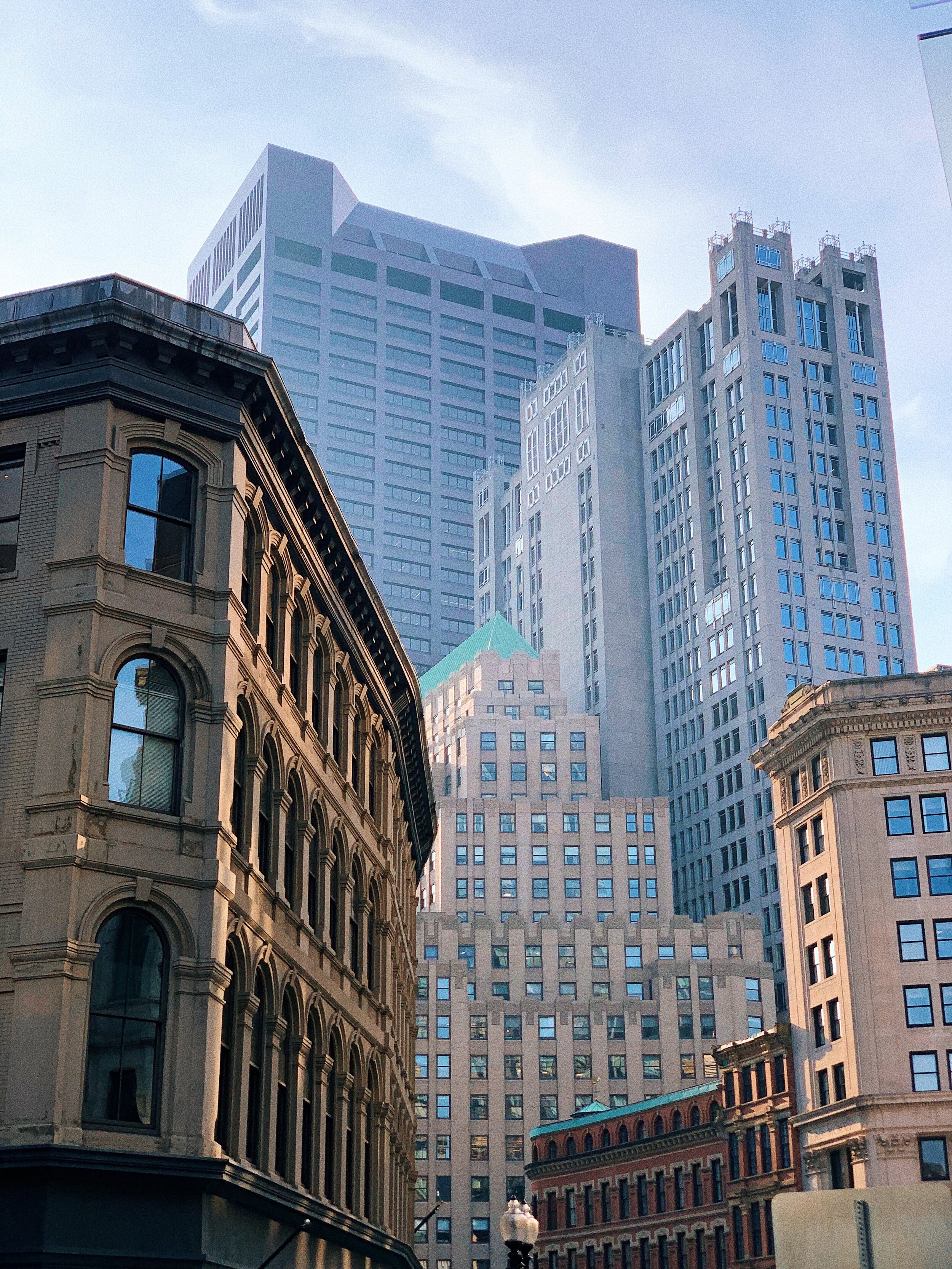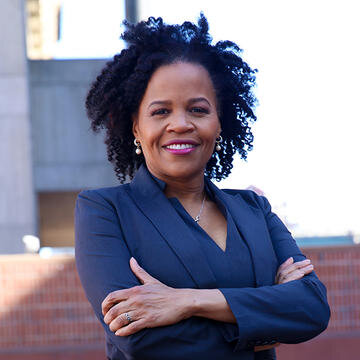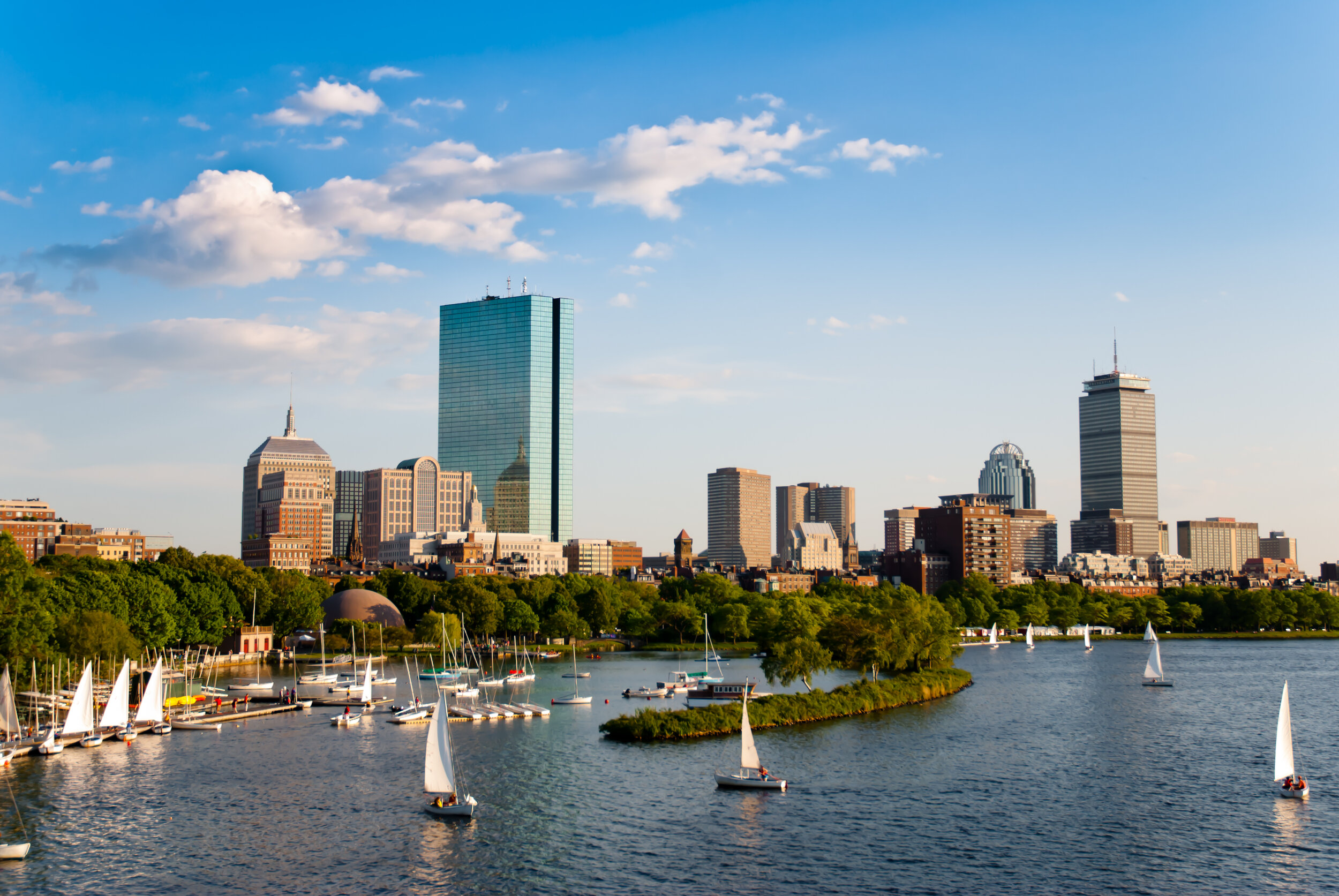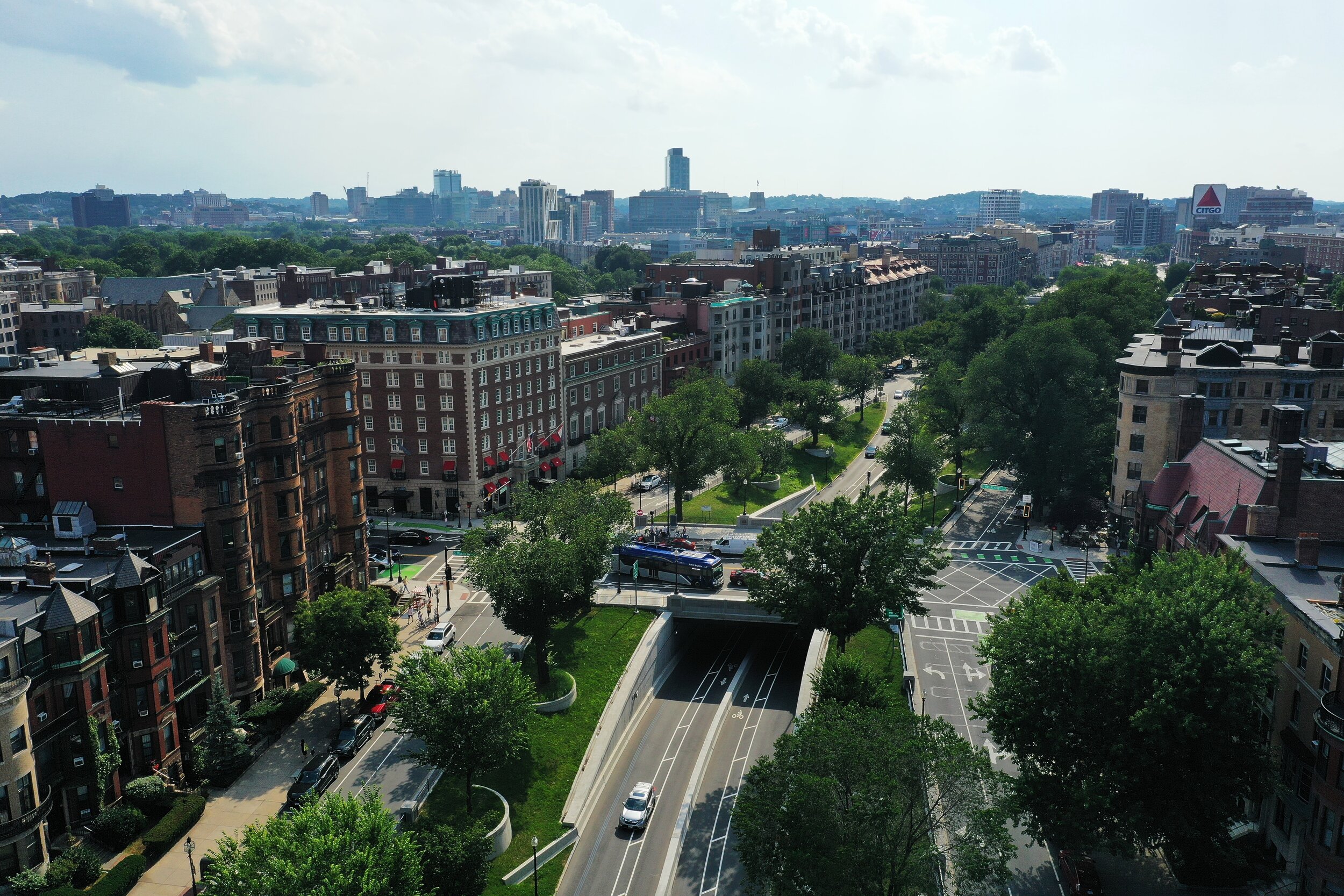An interview with John Cleveland about what a decade of running the Boston Green Ribbon Commission can teach us about city-business collaboration to drive climate action.
There is now no doubt that we need to accelerate the pace of change to avoid a climate breakdown, and Boston, in the US, is one of many cities stepping up to the challenge. For Boston, a city on the North Atlantic coast, rising sea levels due to climate change pose a significant danger, increasing the risk of flooding, erosion and habitat loss. The city-business collaboration platform Boston Green Ribbon Commission (GRC) was formed to support the City in proactively preparing for and mitigating such climate-related threats.
The City of Boston by Anastasia Starz
The GRC was launched in 2010. Since then, John Cleveland has been leading the initiative together with his colleague Amy Longsworth with the aim of connecting business and city leaders to improve the resilience and sustainability of Boston. With a long legacy of consulting with cities, states, companies and foundations on climate and other issues, John knows the ropes of setting up cross-sectoral partnerships. As one of four fellows supporting the City-Business Climate Alliance (CBCA), the Boston GRC also helps a global network of cities by sharing learnings and advice. The CBCA team met John over a Zoom call to discuss the lessons learned from the last 11 years and the next steps for the Boston Green Ribbon Commission. He gave us an overview of how it all started.
Getting Started
The launch of the GRC was precipitated by two concurrent events: 1) the development of the City’s first detailed climate action plan; and 2) a decision by the Barr Foundation to commit all of its environmental grantmaking towards place-based climate action. At the time, Barr was the largest environmental grantmaker in New England but was doing no grantmaking in the climate space. John’s non-profit, the Innovation Network for Communities (INC) had been hired by the Barr Foundation to help them develop their new climate program.
Working closely with both the City of Boston and the Barr Foundation, it became clear to John that there was a need for a leadership coalition to help put climate action into practice: "One of the main questions in our analysis was - where was the civic and business leadership group we needed to be having the conversation on climate with? We realized it wasn't just a government thing, but more like all hands on deck. Achieving our resilience and emissions reductions goals would require transformational change. To make that change happen, you had to have civic and business leadership on board. At the time, there wasn't any business organization who could take this mission on easily." As a result, then-Mayor Thomas Menino, and Barr Foundation founder Amos Hostetter, agreed to create the Boston Green Ribbon Commission to play that role.
Kim Janey, Mayor of Boston and Boston Green Ribbon Commission Co-Chair
"One of the primary purposes of putting the GRC together was to create political continuity across changes in administration,” said John. “We created a strong stakeholder base so that any new mayor who came in wouldn't throw away all of what the previous administration had done and start over."
The GRC is now a voluntary CEO network with 36 members. Amos Hostetter co-chairs it with Mayor Kim Janey of Boston, and it has two vice-chairs and an Executive Committee of eight members. While John and Amy are the only two full-time employees, the GRC has four sector-based working groups (healthcare, higher education, commercial real estate, and cultural institutions) plus a working group on climate preparedness, all of which are staffed by part-time consultants.
Working on the ground through these thematic groups, the Boston GRC has successfully supported the City in both the development of its Climate Action Plan and now its implementation. For example, the Commission partnered with the City to launch Climate Ready Boston in December 2016, to advance the understanding of climate threats specific to Boston. This report includes a detailed consensus climate forecast for the City, a broad vulnerability assessment, and a detailed roadmap for implementing eleven strategies and 39 specific initiatives. This set the stage for a number of important projects, including district scale resilience planning in five neighbourhoods; assessments of governance and finance options; a feasibility analysis of a harbour barrier; and important work to revise zoning and development approval processes. The City and the GRC also partnered on the Carbon Free Boston initiative, which analyzed detailed strategies to guide Boston’s transition to a renewable energy future. The strategies in the 2019 Climate Action Plan update released in October 2019 are largely based on the analysis in the Carbon Free Boston report. As a follow on to these two initiatives, the GRC is supporting the City in getting critical regulatory requirements in place, including resilience and net-zero carbon requirements for all new construction, and a mandatory emissions performance standard for large buildings, requiring them to be on a path to carbon neutrality by 2050.
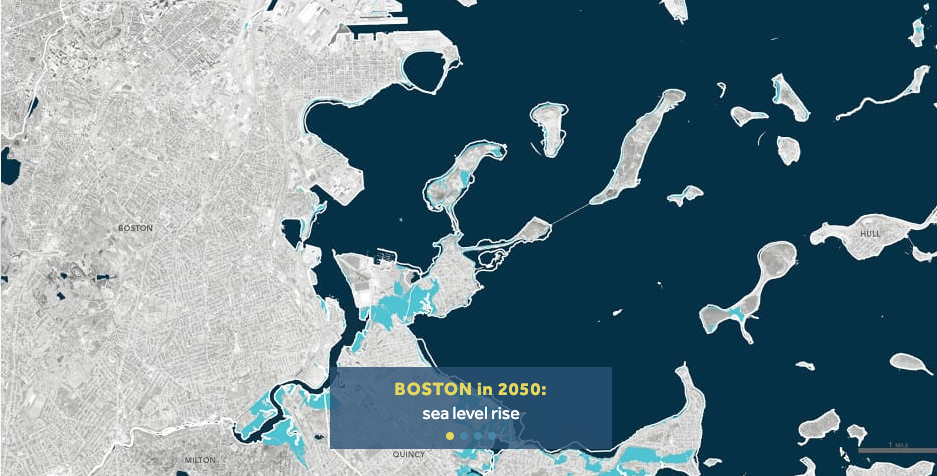
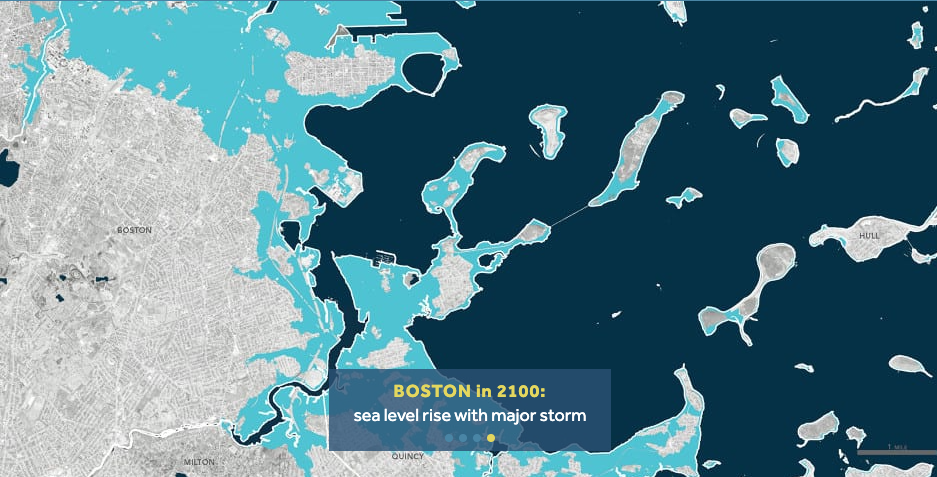
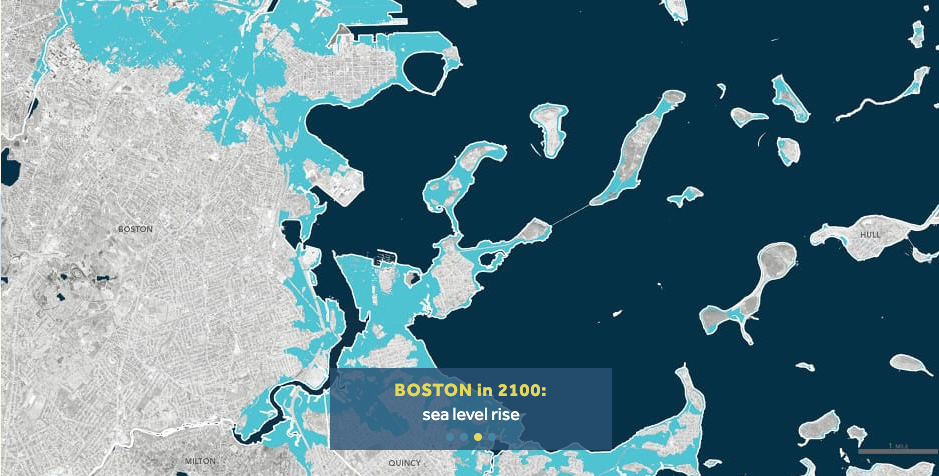
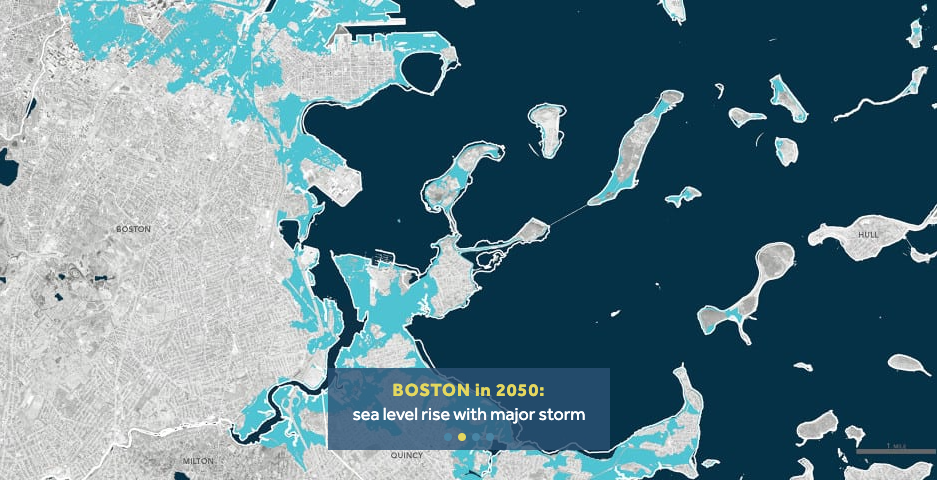
What worked and what didn't
Looking back at the history of the Boston Green Ribbon Commission, John reflected on the progress made over the years and some of the challenges remaining: "I think what has gone well, is the basic idea that we started with, which is, we need an organized way to connect and communicate with business and civic leadership on climate and by getting these groups on board, we'll be able to implement much faster. If we hadn't been intimately engaged with all these constituencies, if we hadn’t understood their point of view on these things, there's just no way we would have been able to get resilience and mitigation plans in place."
One of the secrets to getting people onboard has been the art of listening. John explained: "We've been customer-focused, we've paid attention and listened to the customer. We've taken the time to understand the issues from their point of view, and they really respect that."
John further emphasized that a key to success when setting up a new city-business collaboration platform is finding a funder willing to invest in a long-term plan. For the Boston Green Ribbon Commission, the Barr Foundation has been the primary funder since the beginning. The “patient capital” of the Barr Foundation has enabled the GRC to build a diverse funding base over time, which now includes over 70% of its members.
He continued: "The challenge that we have, is that now is the time where the heavy lifting is going to happen. We have been very successful in getting the City lined up to do the right policy things, but it's not just policy that's needed. It's actual implementation capacity. And we have not created a sense of urgency about building the implementation capacity, which means spending money and creating new institutions. So that's the big wall for us to climb, on both the mitigation side and the resilience side. I just don't think we've been successful yet in building the political will to invest in new institutions necessary to push implementation. That, I think, is the big challenge."
While the GRC hasn't succeeded yet in getting all the necessary players to gear up for the implementation phase of Boston’s Climate Action Plan, John believes that the recent extreme weather events served as a wake-up call for many. "We're seeing that the climate catastrophes (while being depressing) are also really helping to drive the sense of urgency. I mean, when the hottest place on the face of the earth is a village in British Columbia, then something's wrong. Just a weekend ago, I couldn't see the East Coast mountains because of the smoke from Oregon forest fires on the West Coast. That is just not right."
“Now is the time where the heavy lifting is going to happen. We have been very successful in getting the city lined up to do the right policy things, but it's not just policy that's needed. It's actual implementation capacity.”
John Cleveland, Executive Director of the Boston Green Ribbon Commission
A new strategy and focus on equity
With an ambitious and rigorous Climate Action Plan in place, the GRC is now turning toward a new phase in its work. John revealed some key elements of their newly launched strategy: "Our intent is really to focus the next five years around implementation, around making things happen on the ground." As an example of this new direction, the GRC secured a $250,000 grant from the Bank of America to support the City in establishing a Boston Climate Bank to help finance needed building retrofit projects.
An additional factor that has guided the new strategy design is the recognition that addressing climate change must go hand in hand with achieving racial equity. To address the intersection between climate change and social equity, the GRC has launched a Climate Justice Planning initiative with four main goals:
Build a shared understanding among GRC stakeholders of how racial and social inequities have shaped Boston's development so patterns are not repeated as the city is redesigned to be resilient and carbon neutral.
Support the ongoing work of others and listen to the climate-related priorities and initiatives of frontline community groups and environmental justice organizations.
Act on key policy opportunities for climate justice outcomes in the implementation of Climate Ready Boston and the Climate Action Plan 2019 Update.
Address the GRC's own equity needs by incorporating climate justice and a racial equity perspective imperative into the GRC membership.
John explained why it's essential to focus on implementation and not just rhetorics: "You can't have climate justice outcomes if you're not implementing anything because climate justice is about how the implementation happens. If you want equal distributions of the benefits and burdens, you have to be doing something. So if you're not retrofitting any residential buildings in the city of Boston, you can't talk about social equity because you don't have anything to actually apply it to. You can't have green jobs if you're not making investments."
Working with other levels of government
Although primarily a city-business platform, the GRC also has a close relationship with the Commonwealth of Massachusetts. John explained why the state framework is important: "There are many aspects of climate action that matter to the City of Boston that are controlled at the state level – including major transportation decisions, the state building code, the design of the electricity grid and regulation of waterfront development. It is important to us in Boston that the Commonwealth has in place the policies and structures that enable our goals. An additional aspect is that state climate goals are embodied in binding legislation. In contrast, the City of Boston's Climate Action Plan is not a legal document. You can't sue the City of Boston for not implementing the Climate Action Plan. But advocates can sue the state to force action, and have done so successfully in the past." By working closely with the Commonwealth, John hopes that the state will adopt more policies that push climate action in the City of Boston.
Boston by Noelia Hn / Getty Images
A final piece of advice
As a CBCA fellow city, the Boston Green Ribbon Commission brings substantial experience of city-business collaboration to our network. This aspect of knowledge-sharing around climate change is something John appreciates. "The value to us with the CBCA is best practice sharing among peers. Looking at some of the other initiatives and just seeing what other people are doing, in different ways than what we're doing, that's really useful."
As a final question, we asked John what advice he would give to other cities looking to set up or advance their own city-business collaboration platforms:
"You really do need to have one or two good core lead funders, who can give you decent resources at the front end. Because to make these networks work, you have to have senior staff who know how to deal with executives, and that costs money. You need to have people who know how to walk into the CEO suite and engage them strategically, really quickly. And then I think the second thing would be: make sure that you bring in the C-suite level players, not just the sustainability staff. If you want the group to have stature with the political apparatus and other players, you have to have the CEO-level people participate in it. And the way you get those leaders is to have C-suite players invite other C-suite peers. That’s my key advice - for the network leadership, stay at the C-suite level."
As it enters its second decade of working with Boston and local businesses to accelerate the implementation of the City’s Climate Action Plan, the GRC is ramping up its efforts to fight climate change. In the coming years, unprecedented collaboration and investments will be needed to get on track with reaching global climate goals. Boston is well-positioned to tackle the challenge with the solid city-business partnership that the GRC has built. And the CBCA looks forward to supporting and learning from their journey.
To learn more about the Boston Green Ribbon Commission, click here.
Newbury Street, Boston by Henry Dixon

